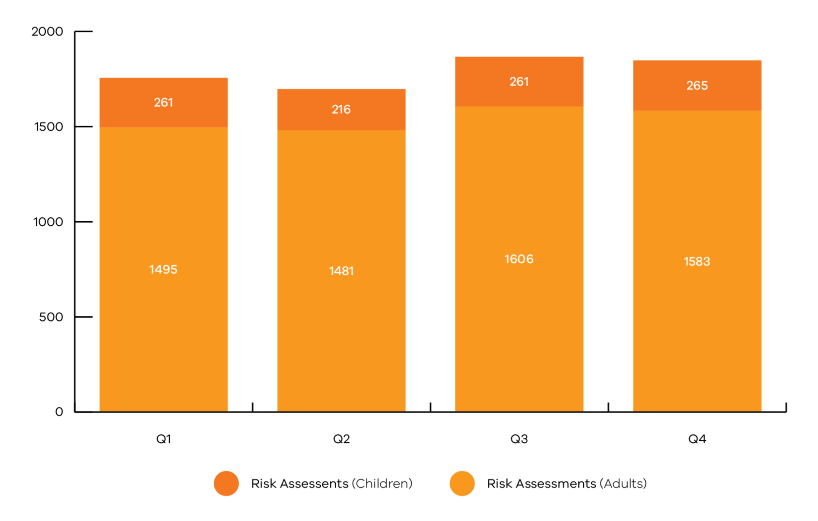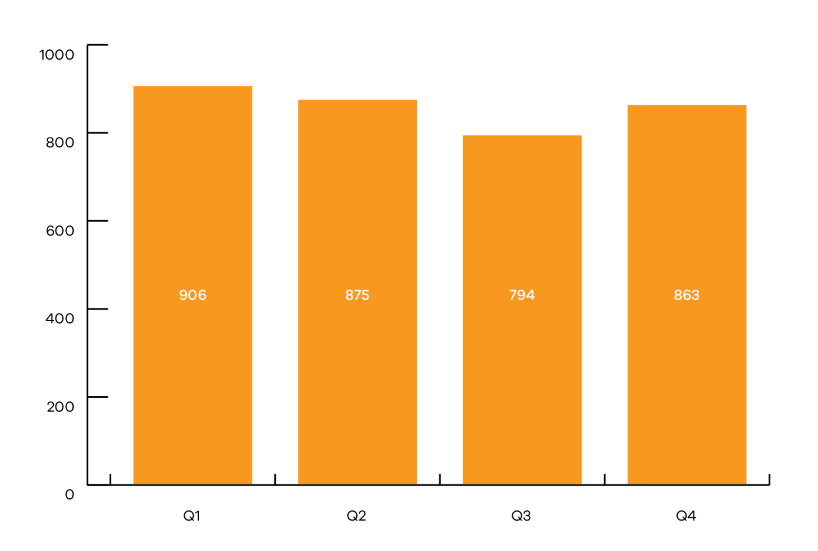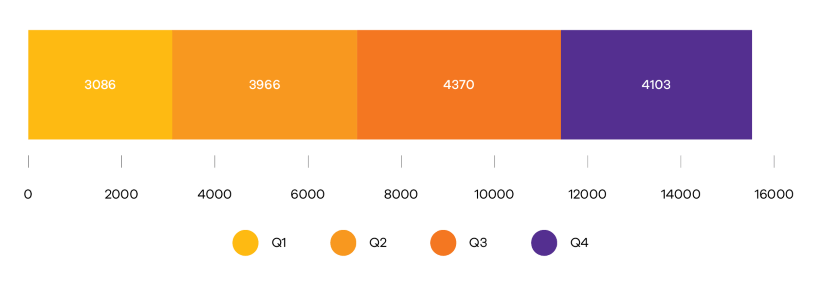Practitioners at The Orange Door are supported to do their work by changes to information sharing legislation, an improved family violence risk assessment and management framework and the Central Information Point.
The Orange Door takes a holistic approach to working with families, identifying service responses based on risk and need - whether that relates to family violence or safety and support of children. In the process of supporting a family, children are treated as individuals, and as victims in their own right if they have experienced family violence.
The purpose of assessment and planning is to assess the key risks and needs of each individual and to identify their goals and preferences in the context of their family and community. Priority and urgency of response is determined through the Screening, Intake and Triage (SIT) process.
Assessing risk where family violence is present
How is risk and need being assessed for victim survivors of family violence?
Practitioners within The Orange Door assess family violence risk for victim survivors. Practitioners work across specialisations to ensure there is a multi-agency coordinated response to address identified risk and needs and develop appropriate safety planning.
The Family Violence Multi-Agency Risk Assessment and Management (MARAM) Framework supports professionals to effectively identify, assess and manage family violence risk. The MARAM Framework, together with the Family Violence Information Sharing Scheme (FVISS) and Child Information Sharing Scheme (CISS), strengthen system-wide family violence risk assessment and management, and facilitate better sharing of risk-relevant information between services to help keep people safe and keep perpetrators in view.
Figure 7. Family violence risk assessments
In 2019-20 practitioners undertook 7,168[1] risk assessments; of these 6,165 were undertaken for adults and 1,003 were undertaken for children (Figure 7). The number of assessments undertaken by practitioners was higher by 1,709 (31.3%) than the previous year. The majority of the increase (98.5%) was for risk assessments undertaken for adults.
The number of risk assessments undertaken in 2019-20 was lower than the number of people who received a service response. As noted earlier, this reflects that in a number of cases The Orange Door is unable to make contact with the person referred (30.7%), or when they do, the person chooses not to take up the offer of a service or support (14%). These proportions include the referrals for perpetrators of violence, who more frequently do not respond to attempts to contact or decline the offer of services. In some cases, a determination may be made not to make contact with a perpetrator as it would increase risk for a victim survivor.
The process of assessing family risk is ongoing throughout the time that The Orange Door works with a client. The Tools for Risk Assessment and Management (TRAM) were first introduced in The Orange Door at establishment and are continuing to be utilised with increased application and efficiency through continued practice experience, with increasing numbers of assessments being conducted for adults.
These tools have introduced a significant shift in practice regarding individual assessment of children. This continues to be an area for further improvement and development in The Orange Door.
Central Information Point
How is information being shared about a perpetrator to inform assessment of risk and safety responses?
The Central Information Point (CIP) is a unique initiative that helps to keep perpetrators in view. The CIP consolidates critical information relevant to family violence risk from Victoria Police, Corrections Victoria, the Magistrates’ Court of Victoria, and Department of Families, Fairness and Housing (DFFH) Child Protection. Information from these sources about a perpetrator or alleged perpetrator of family violence is consolidated into a single report for The Orange Door practitioners to assist with family violence risk assessment and management.
In 2019-20 a total of 3,438 CIP reports were provided to practitioners in The Orange Door (Figure 8). CIP reports provided to practitioners in 2019-20 increased by 20.8% from 2018-19.
Figure 8. Central Information Point - reports on perpetrators
[3] The number of risk assessments reported in Budget Paper 3 reporting for 2019-20 was 7,002, excluding 166 assessments which had not progressed from the created status at the time of the reporting. This variation is due to point in time data extraction within a dynamic CRM system.
Identifying risk and need for children and young people
How is risk and need being identified where there is concern for child wellbeing?
The Orange Door practitioners undertake assessments for children and young people where there are concerns for the safety, wellbeing, or development of a child, including when they have been impacted by family violence. There is a strong focus on working with families to develop a thorough understanding of child safety and wellbeing concerns in accordance with the Best Interests Case Practice Model. Community Based Senior Child Protection Practitioners support this process by providing access to information about current or previous assessments and interventions by Child Protection. The MARAM assessment tools and practice guides provide the framework for the assessment of family violence risk posed to children.
In the year ahead, FSV will work together with DFFH, and in consultation with the sector, to deliver a consistent approach to child wellbeing risk assessments, aligned with the Best Interest Case Practice model which is currently being reviewed.
Figure 9. Risk and needs assessments for children and families
A total of 15,525 child safety, wellbeing and needs assessments were recorded in 2019-20, which was was 3 times higher than in 2018-19 (5,373). There were 1,003 family violence risk assessments of children and young people recorded, which remained steady compared to 2018-19.
This brings the total risk and child safety wellbeing assessments undertaken in The Orange Door for children to 16,528 (compared to 6,351 in the previous year).
This increase can be attributed to an improvement in practice as well as enhancements to the CRM, making it easier for practitioners to record information from child wellbeing assessments.
Updated


